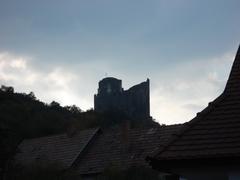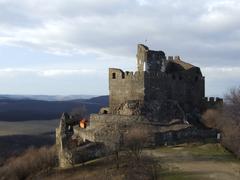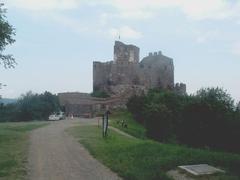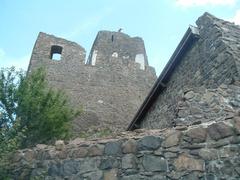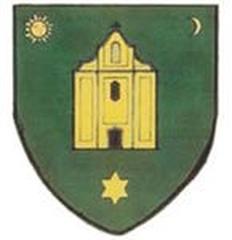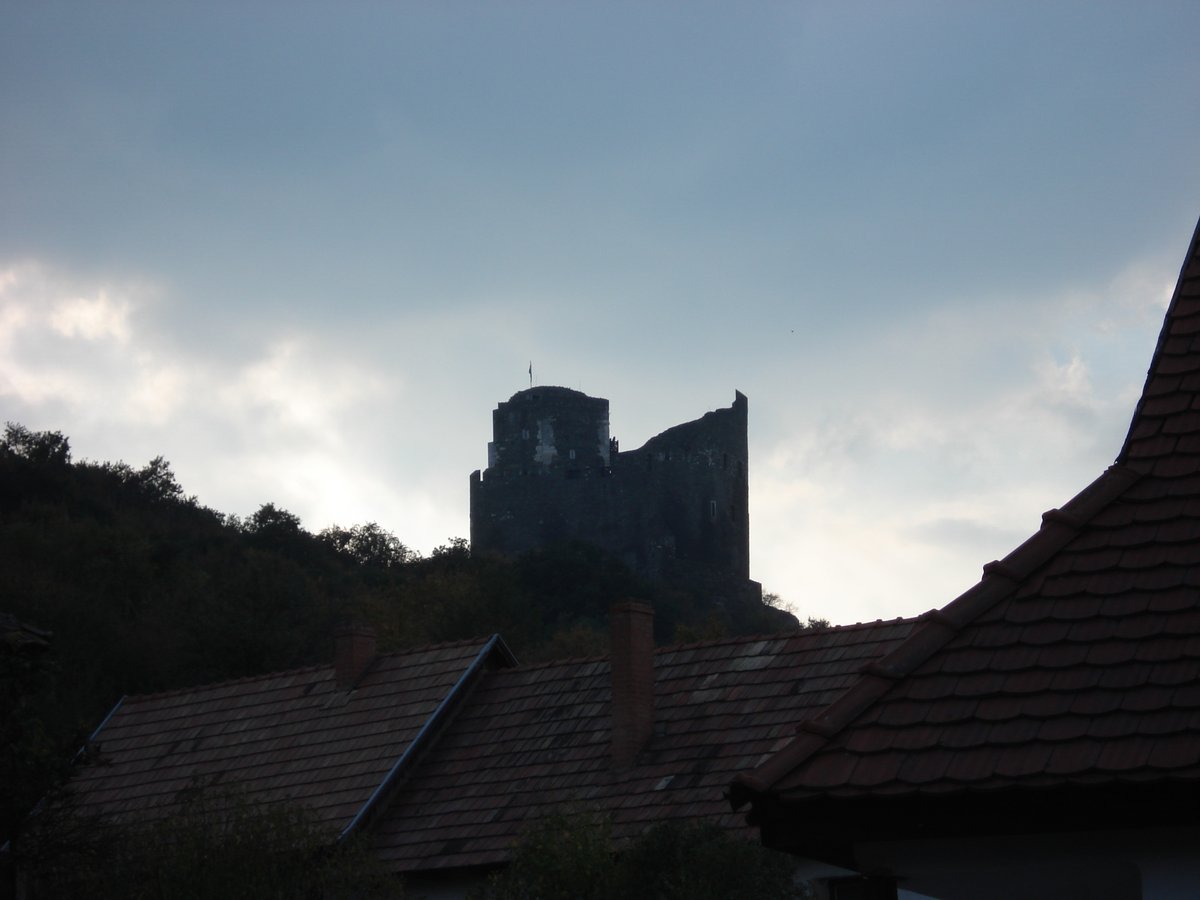
Visiting Hours and Tickets for Hollókő Castle in Sóshartyán, Hungary
Publishing Date: 16/08/2024
Introduction to Hollókő Castle
Nestled in the picturesque village of Hollókő in Nógrád County, Hungary, Hollókő Castle stands as a testament to Hungary’s rich medieval history and cultural heritage. The village of Hollókő, a UNESCO World Heritage Site, is renowned for its well-preserved traditional architecture and vibrant cultural practices, making it a living museum of Hungarian rural life (UNESCO). Built in the 13th century as a defensive stronghold by the Kacsics noble clan, the castle was designed to protect the region from future invasions following the Mongol invasion of Hungary (Wikipedia). Over the centuries, Hollókő Castle has withstood numerous conflicts, including the tumultuous Ottoman era, and has been meticulously restored to preserve its historical integrity (Hungary Unlocked). This guide provides comprehensive information on visiting Hollókő Castle, including its historical background, architectural features, and visitor information, ensuring a memorable experience for history enthusiasts and travelers alike.
Contents Overview
- Introduction
- Historical Background
- Origins and Construction
- Early Records and Development
- Ottoman Era and Abandonment
- Architectural Features
- Restoration Efforts
- Legends and Folklore
- The Palóc People and Cultural Significance
- Modern-Day Hollókő
- Visitor Experience
- Exploring the Castle
- Exhibits and Displays
- Events and Festivals
- Accessibility and Amenities
- Nearby Attractions
- FAQ
- Conclusion
- Sources
Visit Hollókő Castle: A Guide to Hungary’s Medieval Marvel, Tickets, and Visiting Hours
Introduction
Nestled in the picturesque village of Hollókő in Nógrád County, Hungary, Hollókő Castle stands as a testament to the country’s rich medieval history and cultural heritage. This guide will provide you with all the information you need to plan your visit, including historical insights, visitor information, and travel tips.
Historical Background
Origins and Construction
Hollókő Castle, located in the village of Hollókő in Nógrád County, Hungary, has a rich history that dates back to the 13th century. The construction of the castle began in the aftermath of the Mongol invasion of Hungary in 1241-1242. The primary purpose of the castle was to serve as a defensive stronghold to protect the region from future invasions. The Kacsics noble clan, who held the area at the time, initiated the construction (Wikipedia).
Early Records and Development
The first written record of Hollókő Castle appears in 1310. The original village, now in ruins, was built just below the castle walls. This strategic location allowed the inhabitants to seek refuge within the castle during times of conflict. The castle’s design and construction were part of a broader wave of stone-castle building that swept across Hungary following the Mongol invasion (UNESCO).
Ottoman Era and Abandonment
In 1552, the Ottomans captured Hollókő Castle, marking the beginning of a tumultuous period during which control of the castle alternated between Ottoman and Hungarian forces. This period of conflict lasted for approximately 150 years. By the end of the Ottoman era in 1683, both the castle and the original village were abandoned. The present-day village of Hollókő developed slightly lower down the hill, away from the castle ruins (Wikipedia).
Architectural Features
Hollókő Castle is perched atop a 362-meter rock formation, which provided a natural defensive advantage. The castle’s architecture includes several medieval elements such as a kitchen, living room, blacksmith workshop, and economic buildings. The irregular architecture, coupled with its unique rock formation, highlights the ingenuity of its creators (Hungary Unlocked).
Restoration Efforts
Significant restoration efforts have been undertaken to preserve Hollókő Castle. Notable restorations occurred in 1966 and the 2010s, culminating in a grand reopening in 2022. These efforts have rejuvenated interest in the castle’s legacy, offering a unique glimpse into the medieval fabric that once dominated this region (Hungary Unlocked).
Legends and Folklore
Hollókő Castle is steeped in legends and folklore, adding a mystical layer to its historical significance. One popular legend involves a lord who kidnapped the beautiful wife of a neighboring squire and imprisoned her in the castle. According to the tale, the woman’s nurse, who was a witch, made a pact with the devil to turn his sons into ravens. These ravens then dismantled the castle stone by stone, allowing the woman to escape. The castle, and consequently the village, was named Hollókő, which means “Raven-stone” in Hungarian (UNESCO).
The Palóc People and Cultural Significance
The village of Hollókő is a well-preserved ethnographic village of the Palóc people, known for their traditional wooden architecture and layout of buildings, farms, and orchards. The village’s exceptional preservation and testimony to rural life before the arrival of modern farming practices led to its inscription as a UNESCO World Heritage Site in 1987 (Wikipedia).
Modern-Day Hollókő
Today, Hollókő is a living, inhabited settlement that has maintained its historical integrity. The village museum, operating since 1964, showcases the lifestyle and traditional architecture of the Palóc people. The village’s houses, built from natural materials like wood and stone, exhibit the unique Palóc architectural style characterized by colorful facades and decorative motifs (BNPI).
Visitor Experience
Visitors to Hollókő Castle can explore various parts of the castle, including the weapon room, chapel, and waxworks museum. The castle offers spectacular views across the fields and forests of the countryside. Entry to the castle is reasonably priced, with tickets costing Ft 900 (approximately US$3) for adults and Ft 600 (approximately US$2) for concessions (Time Travel Turtle).
Events and Festivals
Hollókő hosts several traditional festivals and events throughout the year, celebrating age-old customs and cultural heritage. The most notable event is the Easter festival, where locals dress in traditional Palóc clothing and participate in various activities, including knightly games and gastronomic programs (Travel Addict).
Accessibility and Amenities
Hollókő Castle is conveniently accessible via bus routes from Szécsény, Pásztó, Salgótarján, and Budapest. Parking options are available near the old village or along Kossuth Street in the lower part of the village. The castle is open to visitors year-round, with varying opening hours depending on the season (Hungary Unlocked).
Nearby Attractions
While visiting Hollókő, consider exploring nearby attractions such as the Palóc Ethnographic Museum and the Church of St. Martin. These sites offer additional insight into the region’s cultural heritage and provide further opportunities for exploration and photography.
FAQ
Q: What are the visiting hours for Hollókő Castle?
A: The castle is open year-round, but the opening hours vary depending on the season. It’s best to check the official website before planning your visit.
Q: How much do tickets to Hollókő Castle cost?
A: Tickets cost Ft 900 (approximately US$3) for adults and Ft 600 (approximately US$2) for concessions.
Q: Are there guided tours available at Hollókő Castle?
A: Yes, guided tours are available and provide a deeper understanding of the castle’s history and architecture.
Q: What are some nearby attractions?
A: Nearby attractions include the Palóc Ethnographic Museum and the Church of St. Martin.
Conclusion
Hollókő Castle stands as a remarkable testament to Hungary’s medieval history and cultural heritage. Its rich history, architectural marvels, and enchanting legends make it a must-visit destination for history enthusiasts and travelers alike. The village of Hollókő, with its well-preserved traditional architecture and vibrant cultural events, offers a unique glimpse into Hungary’s rural past, making it a truly unforgettable experience. Plan your visit today and immerse yourself in the captivating history and culture of Hollókő Castle and its surroundings. For more information and updates, follow us on social media and check out our other related posts.
